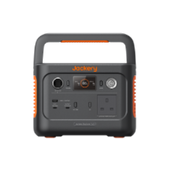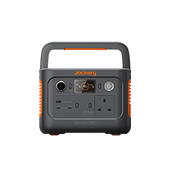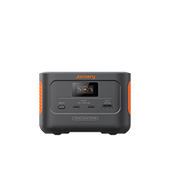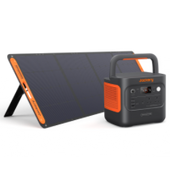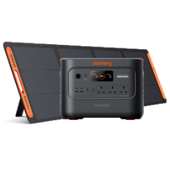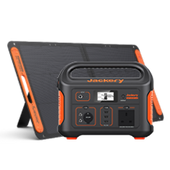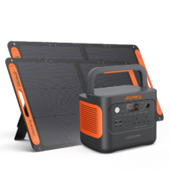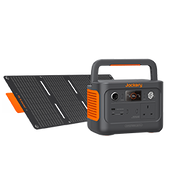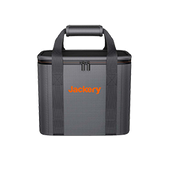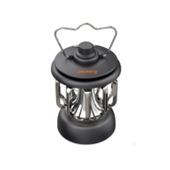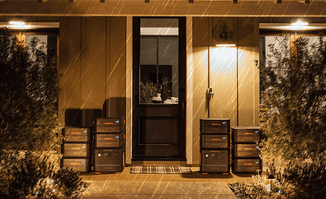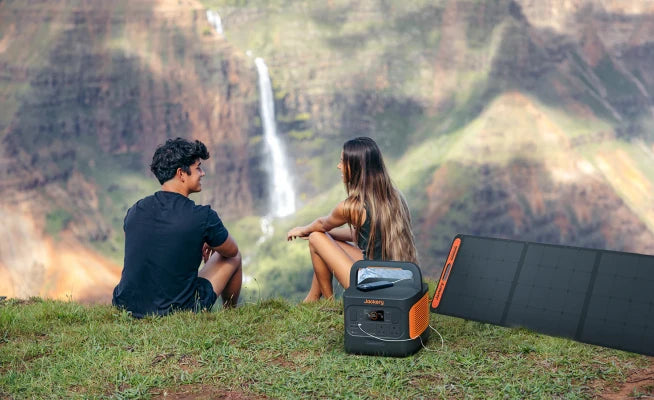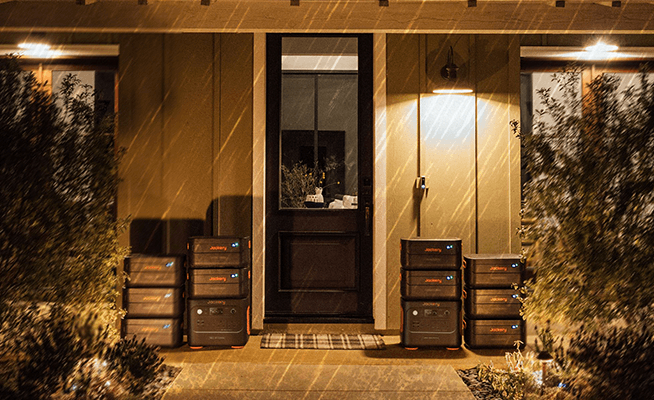Mount Snowdon, located in North Wales, is a popular mountain with breathtaking views of surrounding peaks, jagged ridges, dramatic valleys, and sparkling lakes. Over 400,000 hikers flock to the summit each year for this thrilling challenge. So, how long does it take to hike Snowdon? That depends on the route you choose, but on average, it takes about 6-7 hours to reach the summit and walk down.
In this article, we'll explore six popular hiking routes on Mount Snowdon and provide detailed round-trip times for each.
|
Key Takeaways: |
|
Why Do People Like to Hike Snowdon?
Snowdon (Welsh: Yr Wyddfa), located in Gwynedd, is the highest peak in Snowdonia National Park in northern Wales, UK, reaching an elevation of 1,085 metres (3,560 feet). It is not only the highest point in Wales, but also the highest peak in England and Wales. Once a copper mining site, the miners' path reveals the jagged remains of a crushing plant and barracks. Today, Snowdon is a mecca for outdoor enthusiasts, thanks to its stunning natural scenery and abundant hiking trails.
Why Do People Love Hiking in Snowdon?
The popularity of Snowdon stems from several factors:
Diverse Hiking Routes: Snowdon offers a wide range of options for hikers of all abilities, from challenging climbs to more moderate paths. There are six officially recognised routes, varying in difficulty, suitable for all ages, fitness levels, and experience levels.
Magnificent Natural Scenery: As you climb, views of deep, emerald valleys and sparkling lakes unfold. From the summit, panoramic views of Snowdonia are offered. On clear days, you can overlook not only the mountains and lakes, but even the Isle of Anglesey, 20 kilometres away.
Convenient Accessibility: For those with limited stamina or those looking to save time, there's the UK's only public cog railway. Built in 1897, this railway departs from Llanberis and takes you directly to the summit.
How Long Does It Take to Hike Snowdon?
Snowdon's hike is between 7 and 9 miles (11 and 14.5 kilometres). So, how long does it take to hike Snowdon? A six- to seven-hour round trip is the most common. Faster hikers can complete the round-trip in 4 to 5 hours. Slower hikers or those taking lots of photos can take longer —around 7 to 9 hours round-trip. How long it takes to hike Snowdon depends on the route you choose. There are six routes to the summit of Snowdon, each taking a different amount of time.

Llanberis Path
Distance (there and back): 14.5km
Duration (there and back): 7 Hrs
Ascent: 3,199 feet (975 metres)
Start Point: Parking For Snowdon, Llanberis, Caernarfon LL55 4TU
The Llanberis approach is the longest and gentlest to the top, offering breathtaking views of the surrounding area, including Llyn Padarn. This makes it a good choice for families with children and casual hikers seeking a straightforward ascent. It's also a popular option for first-time Snowdon climbers.
Miners' Track
Distance (there and back): 13km
Duration (there and back): 6 Hrs
Ascent: 2,372 feet (723 metres)
Start Point: Pen-y-Pass Car Park, off the A4086 (SH 647 557)
The Miners' Track is a popular route that begins at Pen y Pass. The second half is a challenging and steep ascent over loose rock and scree. Starting at the Pen y Pass car park, the Miners' Track passes beautiful lakes and the remains of a historic Britannian copper mine.
Pyg Track
Distance (there and back): 11km
Duration (there and back): 6 Hrs
Ascent: 2,936 feet (895 metres)
Start Point: Pen-y-Pass Car Park, off the A4086 (SH 647 557)
The Pyg Track is one of the shortest routes to Yr Wyddfa, but it is also one of the most rugged and challenging to the summit. The Pyg Track winds its way up the foothills of Crib Goch. The climb up Kleb Goch and along the ridge is incredibly treacherous, and even in ideal weather, it is daunting.
Watkin Path
Distance (there and back): 13km
Duration (there and back): 6 Hrs
Ascent: 3,330 feet (1,015 metres)
Start Point: Pont Bethania Car park, Nant Gwynant, off the A498 (SH 627 507)
This challenging route begins near Bethania and covers 8 miles (13 kilometres), with the highest elevation gain. The top section from Bwlch y Saethau to Bwlch Main is steep and composed of loose scree, often slowing both the ascent and descent. Along the way, there are beautiful waterfalls, old slate quarries, and stunning scenery.
Rhyd Ddu Path
Distance (there and back): 12km
Duration (there and back): 6 Hrs
Ascent: 2,785 feet (849 metres)
Start Point: Rhyd Ddu Car Park, off the A4085 (SH 571 526)
Starting from the Rhyd Ddu car park, the trail is initially in good condition and suitable for a fast walk. As you ascend, the path becomes steeper and more rugged. This route is a good choice for those seeking a little adventure off the beaten path. It also offers stunning mountain views, particularly of the hills of Moel Hebog and Nantlle.
Snowdon Ranger
Distance (there and back): 13km
Duration (there and back): 6 Hrs
Ascent: 3,071 feet (936 metres)
Start Point: Llyn Cwellyn Car Park
The route begins on the shores of Llyn Cwellyn and gradually climbs the slopes of Moel Cynghorion, over Bwlch Cwm Brwynog, then rises steeply above Clogwyn Du'r Arddu to merge with the Llanberis path to the summit. As the path is poorly marked, particularly near the summit, it is only suitable for those with good navigation skills.
What Factors Affect the Time It Takes to Hike Snowdon?
The time it takes to hike Snowdon depends on several variables. Here are some of the main ones:

Hiking Routes
Snowdon has many routes, each with a different duration, height gain, and difficulty, all of which affect the time required. The Llanberis Path is the longest but gentlest, making it ideal for novices and taking approximately 5-7 hours round trip. The Pyg Track is shorter but steeper and takes approximately 5-7 hours round-trip.
Weather
Adverse weather conditions such as fog, heavy rain, and strong winds can reduce visibility and road friction, making hiking more challenging and risky, and significantly increasing the time required. Winter's snow and ice, in particular, require equipment such as crampons and ice axes, which increase the technical requirements and slow the pace.
Fitness Level
The primary factor affecting the time it takes to climb Snowdon is cardiovascular fitness. Hikers in good physical condition can achieve faster speeds, have greater endurance, and require fewer rest breaks. Hikers with lower fitness or limited training may need longer rest breaks.
Hiking Experience
The more experienced a hiker is, the more confident they become and the faster they'll find their way through rugged terrain. Less experienced hikers, on the other hand, may take the wrong path or become hesitant, increasing their hiking time.
Group Size
The larger the group, the slower the hike, as they tend to follow the pace of the slowest hiker. Furthermore, group hiking requires more time for rest, communication, and waiting. For example, hiking with friends or family, especially with children, can significantly increase the time it takes.
How to Plan a Hike Up Snowdon?
Hiking Snowdon is one of the most challenging and spectacular outdoor activities in the UK. To ensure a perfect experience, plan these key points:

Choosing the Right Route
The most significant cause of mountain rescue accidents on Snowdon is getting lost. Therefore, it's essential to choose a route that suits your fitness level and stick to it. Snowdon has six main hiking routes, varying in difficulty and distance, so your choice depends on your fitness, experience, and preferences. Beginners should try Llanberis or Rhyd Ddu, while experienced hikers can tackle the Pyg Track or Snowdon Ranger.
Check the Weather Forecast
Snowdon's weather can be unpredictable, with high winds, cold temperatures, heavy rain, thunderstorms, and reduced visibility common at altitude. Therefore, be sure to check the weather forecast before attempting a hike up Snowdon.
Besides the Met Office, you can also check the Snowdon weather forecast on the MWIS. Furthermore, the weather on Snowdon can change rapidly, so be sure to check it several times throughout the day to ensure no major storms are approaching. Also, be aware of cloud cover during your hike.
Getting to Snowdon
There are several transportation options to Snowdon; please choose the one that best suits your needs based on distance and availability.
Driving: Parking is available at each route starting point, and reservations are required during peak season (April to September). For example, the Peny Pass parking lot can be booked online using the JustPark website.
By Bus: Eryri has an extensive bus network, including the Sherpa'r Wyddfa bus and the Traws Cymru T10, which stops at Ogwen.
Prepare a Backup Plan
Plan your schedule accordingly, taking into account the trip's difficulty and your skill level. Allow at least one day to postpone your journey in case of poor weather. If the main route is inclement, explore other routes that are less difficult or wind-protected, such as the Llanberis Path. If trekking isn't an option, consider riding the Snowdon Mountain Railway to the summit or visiting the surrounding sights.
What Should You Bring and Pack for a Hike Up Snowdon?
Hiking Snowdon is a fantastic experience, but mountain weather can be unpredictable, so being prepared is essential for a safe and pleasurable journey. Here's a comprehensive equipment list:
Clothing: Dress in layers, with quick-drying underwear and pants to wick sweat, a mid-layer like a fleece for warmth, and a waterproof and windproof outer layer, such as a raincoat.
Hiking Shoes: Choose from professional hiking shoes and slip-resistant trail running shoes.
Socks: Professional hiking socks are recommended for their moisture-wicking and cushioning.
Trekking Poles: Provide additional support and stability.
Backpack (20-35 litres): Large enough to accommodate spare clothing and equipment. A waterproof cover is recommended for unexpected rain or snow.
Water: Carry plenty of drinking water in a hydration bladder, soft flask, or bottle.
Food: Pack easy-to-carry, fast-replenishing foods, such as energy bars, chocolate, and beef jerky.
First Aid Kit: Include Band-Aids, bandages, pain relievers, and stomach medication.
Sun Protection: Sunscreen, sunglasses, a hat, etc.
Map and Compass: Even if you think you're familiar with the route, it's essential to carry a paper map and compass.
Headlamp: Bring a powerful headlamp to prevent delays or low-light conditions.
Portable Power Supply: Make sure your phone, navigation device, and other devices are fully charged. Bring a portable power supply (such as the Jackery Explorer 240 v2 / 100 Plus).

Jackery: A Powerful Assistant for Hiking on Snowdon
Snowdon, Wales' tallest peak, has captivated countless trekkers with its unpredictable weather, rugged terrain, and breathtaking views. Climbing Snowdon is a thorough test of physical strength, determination, and equipment for both novice and experienced hikers. Reliable power is critical for safety and comfort on this demanding trek.
The Jackery Portable Power Stations provide continuous power to critical equipment, including mobile phones (for navigation and emergency calls), satellite communications, and headlamps. Even in the face of extreme weather or unexpected circumstances, you can retain communication, request assistance immediately, and ensure the safety of your group. The Jackery Explorer 240 v2 and 100 Plus Portable Power Station are essential companions for climbing Snowdon, providing not only consistent power but also the courage and confidence to take on the unknown.
|
Feature |
Jackery Explorer 240 v2 |
Jackery Explorer 100 Plus |
|
Capacity |
256Wh |
99.2Wh |
|
Weight |
7.94 lbs (3.6 kg) |
2.13 lbs (0.96 kg) |
|
AC Output |
300W (Pure Sine Wave) |
None (USB-C only) |
|
Ports |
1x AC, 1x Car Port, 2x USB-C (100W/15W), 1x USB-A (15W) |
2x USB-C (100W Max), 1x USB-A (18W Max) |
|
Battery Cell |
LiFePO4 3000 cycles to 80%+ capacity |
LiFePO4 |
|
Use Case for Snowdon |
Overnight camping near the base, multi-day basecamp, or if you need to charge a laptop. |
Day-long hike to keep phones, headlamps, GPS, and camera batteries topped up. |
|
Running Time |
Phone (29W): 11 Times Light (5W): 21 Hrs Camera (10W): 10 Times Electric Blanket (55W): 4 Hrs |
Phone (20W): 6.2 Charges Light (5W): 15.8 Hrs Camera (10W): 7.9 Hrs Smartwatch (5W): 15.8 Hrs |
Jackery Explorer 240 v2 Portable Power Station
The Jackery Explorer 240 v2 is the perfect companion for Snowdon hikes thanks to its features:

Lightweight and Portable, yet Powerful Enough: The Jackery Explorer 240 v2 portable power station boasts a powerful 256Wh capacity, enough to power multiple hikes. Weighing only 7.94 lbs (3.6 kg) and featuring a compact, foldable handle, it's lighter and more portable than mainstream alternatives, making it easy to fit into a backpack for convenient storage.
Fast and Efficient, Sunlight-Powered Charging: The Jackery Explorer 240 v2 supports solar charging. With a compatible Jackery Solar Panel, it charges quickly —entirely in just 3.3 hours. It also supports fast mains charging, fully charging in about 2 hours, leaving you ready for your next hike. Furthermore, by activating emergency charging mode via the app, the Explorer 240 v2 portable power station can be fully charged from 0% in just 1 hour.
Multi-Device Compatibility, Stable Output: The Jackery Explorer 240 v2 features a variety of output ports, including an AC outlet, a USB-A port, two USB-C ports, and a vehicle port, allowing it to charge up to 5 devices simultaneously. Pure sine-wave AC output protects delicate electronic equipment, such as small laptops.
Quiet Operation, Eco-Friendly Experience: The Jackery Explorer 240 v2 operates at just 42 decibels, produces zero emissions, and generates no fumes or dust, making it an ideal choice for outdoor adventures. Even in unpredictable weather, it can be recharged whenever the sun shines, providing outdoor power freedom without worrying about running out.
Jackery Explorer 100 Plus Portable Power Station
The Jackery Explorer 100 Plus is the perfect companion for Snowdon hikes with the following features:

Lightweight and Portable, Making It Easy to Get Going: Snowdon hikes are mostly on natural trails with varied terrain, so carrying weight is a significant concern for every hiker. The Jackery Explorer 100 Plus features a compact design, lightweight (2.13 lbs) and small (4.96 x 3.41 x 3.43 in), making it easy to slip into a backpack without adding bulk, yet providing up to 99.2Wh of power reserve, enough for multi-day hikes.
Efficient Charging, Always Ready to Go: Mobile phones, GPS devices, headlamps, cameras, and other electronic equipment are frequently used on walks, and their batteries drain quickly. The Jackery Explorer 100 Plus features multiple output ports (one USB-A and two USB-C), allowing it to charge multiple devices simultaneously. Whether you're using a smartphone for navigation or an action camera to capture the stunning scenery, you can always recharge and stay connected.
Rugged and Durable for the Outdoors: The outdoor environment is challenging, and equipment needs to withstand the elements. The Jackery Explorer 100 Plus is made of UL 94V-0 flame-retardant material, has an impact resistance rating of 9, meets UL safety standards, and is drop-proof (3 drops from 0.9 meters). It also features intelligent dual-chip protection and five temperature probes for precise temperature control.
Solar Compatibility for Long-Lasting Battery Life: The Welsh mountains can be unpredictable, but on clear days, the sun is plentiful. The Jackery 100 Plus can be used with a Jackery SolarSaga solar panel for outdoor solar charging. For example, a full charge with a SolarSaga 100W solar panel takes two hours. It can also be combined with vehicle charging and other charging methods, making it ideal for multi-day hiking or camping trips.
Safety Tips for Hiking Snowdon
Things can go awry in the outdoors, so it's crucial to know what to do when they do. With a bit of preparation, a few things can go wrong. Here are some safety tips for hiking Snowdon to help you take precautions while enjoying Snowdon's magnificent scenery.
Safety Tip 1: Share Your Itinerary
It's best to share your itinerary, plans, and contact information with family and friends. Having a mobile phone with a reliable signal in the mountains is a great way to keep others updated. Alternatively, consider using a location beacon, such as a Spot Device. This is especially important if you're hiking alone.
Safety Tip 2: Travel with a Companion
If you're a new hiker or unfamiliar with the trail, it's best to travel with a companion and avoid going it alone. However, when hiking in a group, maintain visual distance, designate a leader and group leader, and avoid being left alone. If hiking on a guided tour, follow the professional's guidance.
Safety Tip 3: Always Stay on the Trail
The majority of Snowdon's trails are well-marked, so always stay on approved paths. Avoid undiscovered or dangerous regions, particularly those near cliffs, steep slopes, or bodies of water.
Safety Tip 4: Abandon Your Ascent When Necessary
If you become fatigued or the weather changes unexpectedly, do not be afraid to change your plans or turn back. Abandon your ascent decisively and fall quickly. Safety always comes first. Sometimes continuing to advance increases the chance of becoming lost or wounded.
Safety Tip 5: Stay Calm and Respond to Emergencies
If you encounter an emergency, remain calm and follow the following advice to respond or seek help.
If You Get Lost: Stop immediately and use GPS or a map to locate your location. If you are unsure, return to your last known point.
If You Get Injured: Treat any injuries with a first aid kit and call for help.
Altitude Sickness: While climbing Snowdon is not a high-altitude climb, you may experience dizziness if you reach the summit quickly. Rest and rehydrate.
Remember, in an emergency, call 999 or 112 for emergency services and mountain rescue assistance.
FAQs
The following are frequently asked questions about how long it takes to hike Snowdon.
1. How long does it take to climb up and down Snowdon?
There are six main routes to the summit of Snowdon, ranging in length from 11 kilometres to 14.5 kilometres (round trip). On average, a round trip takes about 6-7 hours. Faster hikers can reach the summit in as little as 4-5 hours. Slower hikers or those taking lots of photos may need longer, taking about 7-9 hours round-trip.
2. Can you climb Snowdon in 2 hours?
It's nearly impossible. Under ideal conditions, someone with strong cardiovascular fitness can reach Snowdon in less than three hours via speedier routes such as the PYG Track. However, reaching the top in 2 hours requires a high degree of cardiovascular fitness, which can only be achieved by running for most of the time.
3. Can a beginner climb Snowdon?
Yes. A beginner can certainly climb Snowdon if they choose the right trail, in suitable weather, and with the right equipment. For example, the Llanberis Way is best for beginners as it offers the gentlest path to the summit. However, beginners should consider travelling with an experienced hiker or a guide.
4. Which is harder, Ben Nevis or Snowdon?
Ben Nevis is often regarded as more challenging to climb than Snowdon. While both mountains offer routes of differing difficulty, Ben Nevis' main route has a steeper elevation gain and is considered more difficult than Snowdon's better-marked trails. Furthermore, several routes on Ben Nevis, such as Carn Mor Dearg Arête, require technical climbing and are unsuitable for beginners.
Final Thoughts
Snowdon has six main routes to the summit, offering something for everyone, from beginners to avid climbers. Most people take a 6- to 7-hour round-trip to climb Snowdon. However, inclement weather such as fog, heavy rain, and strong winds can increase the difficulty and risk, significantly extending the hike's duration. Therefore, be sure to pack and bring essential gear, including drinking water, a first aid kit, a map, and a portable power bank. A portable power bank like the Jackery Explorer 240 v2 or 100 Plus can help keep your phone, navigation device, and other devices charged.







